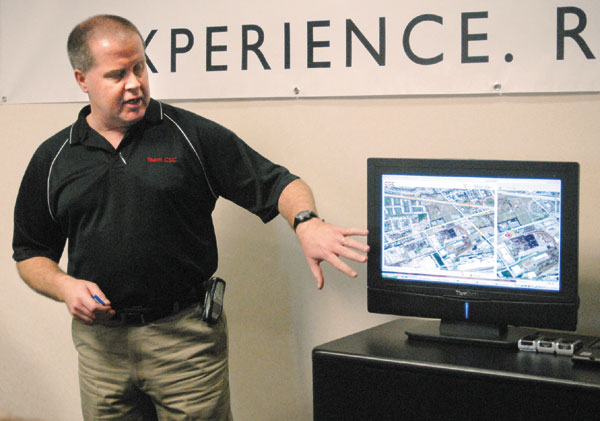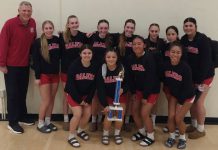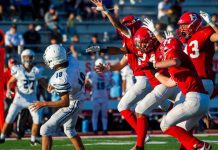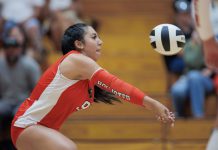
The future is now in cycling, at least for those who want to
follow some of the bigger races on their computers.
Gilroy – The future is now in cycling, at least for those who want to follow some of the bigger races on their computers.
When the second Amgen Tour of California begins Sunday, anyone with Internet capabilities will be able to follow riders and teams throughout the eight-day, 650-mile race.
Computer Sciences Corporation (CSC), whose cycling team is the defending champion in the event, will provide wireless global positioning system (GPS) tracking technology to provide fans with a Google maps view of select race leaders and vehicles at www.csc.com/toctracker. The details were announced Thursday at a press conference at the Gilroy Hilton Garden Inn.
Using micro-trackers, CSC technology will provide updates on locations of riders continuously every 10 seconds, where they are in relation to other riders. An 80-gram unit that resembles a cell phone will be secured with high tech velcro and zip ties under the seat of selected riders.
“Tactically, I believe this can be very helpful in the future,” said Bjarne Riis, owner and manager of Team CSC. “You can see where a breakaway is occurring. There is a time (during a race) when you can’t get information. This will help eliminate that.”
So could the technology be used to track riders during practice?
“Whoa, whoa!” said rider Jens Voigt, who obviously doesn’t want to see technology be taken that far.
Actually, Voigt is a bit old school in his attitude. While he can see benefits to the technology, he can also see drawbacks.
“I can see the danger of this becoming like a video game,” Voigt said. “Everyone can see everything. I can see a day, maybe two years down the road, where (riders) will have a flat screen on their bike where they may be able to say, ‘Oh, (Levi) Leipheimer, he’s suffering.’ It’s a giant leap in technology that’s a bit overwhelming.”
Bobby Julich, another of the thirtysomething CSC riders, thinks the technology can bring more fans into the sport.
“It’s beneficial to the fans,” Julich said. “This will give people more knowledge, a concrete template to admire and support what we do.”
“I don’t know, it’s like the Starship Enterprise,” Voigt quipped.
The Team CSC riders are finishing up two weeks of training around the South Valley area. They will head to San Francisco on Sunday for the prologue, the individual time trials. Stage 1 is from Sausalito to Santa Rosa, Stage 2 from Santa Rosa to Sacramento, Stage 3 from Stockton to San Jose, Stage 4 from Seaside to San Luis Obispo, Stage 5 in Solvang, Stage 6 from Santa Barbara to Santa Clarita, Stage 7 the final sprint race around a circuit course in Long Beach.
In just its second year, the Tour of California is already the biggest cycling race in the country.
“I had no idea it would be as good as it was,” said Julich, last year’s third-place finisher behind Floyd Landis and teammate Dave Zabriskie. “It was the best race of the year with a stellar field. The exposure the race got last year was great.”
This year the exposure will be even greater, thanks in part to the new GPS tracking device.









